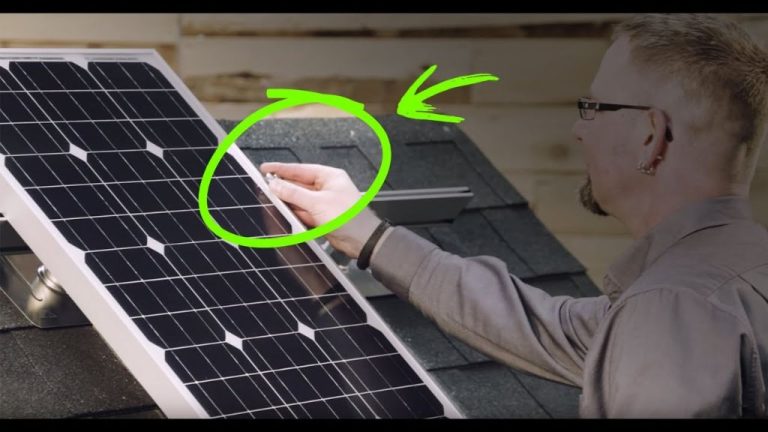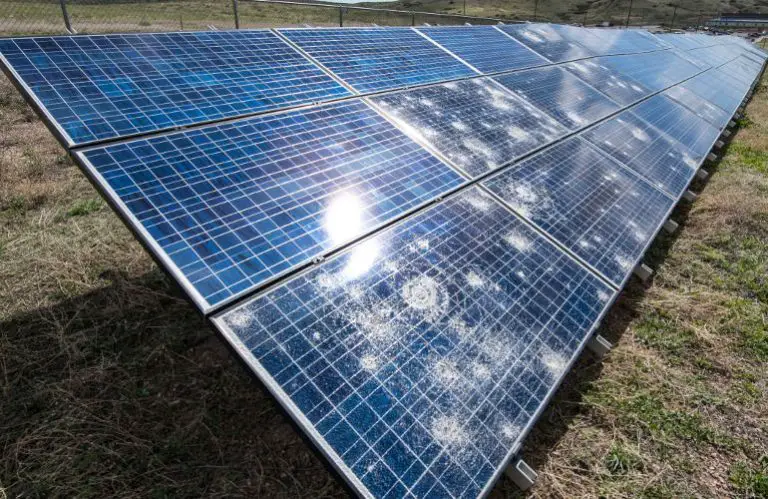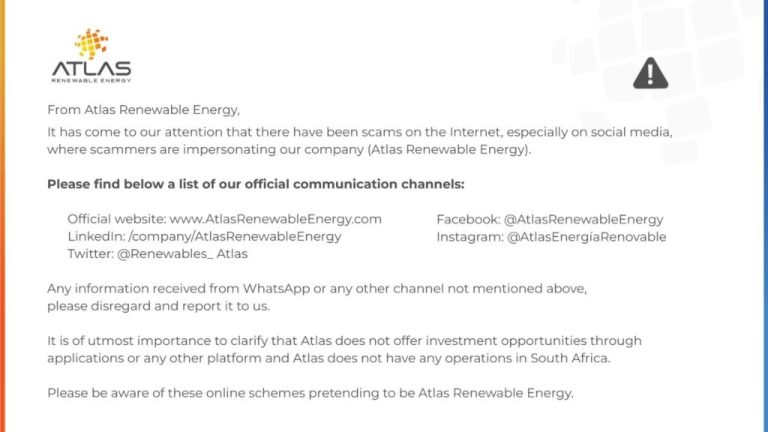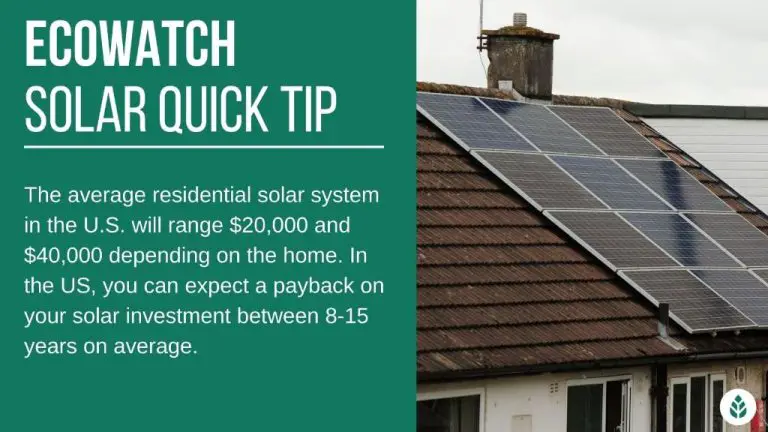Do Solar Panels Need To Be Cleaned?
Solar panels are devices that convert sunlight into electricity. They are made up of solar cells which absorb photons from sunlight and convert them into electrons, creating an electric current. This process is called the photovoltaic effect. The current generated from the solar cells flows into an inverter which converts the direct current into alternating current that can be used to power homes and businesses.
Solar panels are mounted on rooftops or ground installations and oriented to maximize exposure to direct sunlight. The direct current generated by the solar cells charges a battery which stores energy for use when the sun is not shining. Solar power systems can be connected to the utility grid to allow any excess electricity to be sent back to the grid.
Solar energy is a renewable source of power that produces no emissions or pollution. It offers a sustainable way to meet energy needs while reducing reliance on fossil fuels. The amount of sunlight that arrives at the earth’s surface in one hour is enough to meet the world’s energy demands for an entire year (Source: https://www.energy.gov/eere/solar/how-does-solar-work). As solar technology advances and costs continue to fall, solar is becoming an increasingly affordable and accessible source of clean energy.
Why Clean Solar Panels?
Cleaning solar panels can significantly improve their efficiency and energy production. As solar panels get dirty from dust, pollen, bird droppings, and other contaminants, the light absorption gets reduced. Studies show that dirty solar panels can lose up to 25% of their efficiency[1]. Regular cleaning helps panels maintain peak performance and generate more electricity.
Solar panel systems are a major investment, so it is important to optimize their output. Keeping the panels clean improves the return on investment over the system’s lifetime. One source estimates cleaning can increase annual energy yield by 5-25%, with the largest gains in dry and dusty areas[2]. The minor effort of cleaning pays off with more usable energy and financial savings on electricity bills.
In addition to removing surface grit and grime, cleaning helps prevent long-term buildup. Things like hardened bird droppings can etch panels if left over time. A thorough occasional washing avoids permanent issues that could degrade solar panel performance.
[1] https://chintglobal.com/blog/benefits-of-cleaning-solar-panels/
[2] https://blueravensolar.com/blog/cleaning-solar-panels/
How Often to Clean
How often solar panels need cleaning depends significantly on the environment and location in which they are installed. Areas that are dustier or have more air pollution typically require more frequent cleaning than those in cleaner environments. According to an article on Squeegee Squad, “most experts agree that cleaning solar panels an average of every six months is reasonable.”
Specifically, solar panels in desert climates or agricultural areas may need cleaning every 2-3 months due to high amounts of dust and dirt accumulation. In contrast, panels in rainier climates may only need annual cleanings because rain helps naturally wash away debris (Squeegee Squad). Factors like the amount of trees, pollen, and bird droppings around the solar array can also impact cleaning frequency needs.
Monitoring energy production can help determine when a cleaning is required. Output drops over time as dirt and dust accumulate, so checking for dips in productivity can signal it’s time for a cleaning. Ultimately the environment and climate will dictate optimal cleaning schedules. Consult local solar experts to identify ideal frequencies for specific regions and panel locations.
Cleaning Methods
There are a few main methods for cleaning solar panels: using water, soft brushes, and cleaning solutions.
Water is often the best way to clean solar panels. Distilled or deionized water is recommended, as it will not leave behind mineral deposits that tap water can. Water helps remove dust and dirt from the panels without being too abrasive. It’s important to use soft cloths or sponges when wiping with water, to avoid scratching the panels. According to BobVila.com, water attracts other chemicals, making it an efficient cleaner.
Soft brushes, like those made for washing cars, can help lift dirt off of solar panels. Brushing gently in a linear direction across the panels can remove stubborn dust and debris. Stiff brushes should be avoided, as they may scratch the glass.
Specialized solar panel cleaning solutions are also available. These are typically mixed with water and contain surfactants and chemicals to help break up grime. According to Forbes, a solution of dish soap and water or a vinegar-water mixture can also be effective. However, care should be taken with any cleaning solutions, as harsh chemicals may degrade solar panel components over time.
DIY vs Professional Cleaning
When it comes to cleaning solar panels, homeowners have two main options: DIY cleaning or hiring professionals. There are pros and cons to each approach.
DIY cleaning can save money since you won’t have to pay for a professional service. With some basic supplies like a soft brush, mild soap and water, you may be able to clean the panels yourself. This gives you full control over the cleaning process. However, DIY cleaning requires climbing on the roof which can be dangerous. It also demands time and physical effort. You need patience to gently clean the panels without damaging them. The results may not be perfect if you miss spots or don’t rinse thoroughly.
Hiring solar panel cleaning professionals has advantages like safety and convenience. Reputable companies have experience specifically with solar panels. They use specialized equipment to efficiently clean all areas of the panels. This saves homeowners time and effort. Professionals also follow safety protocols like harnessing when working on rooftops. However, professional cleaning costs money. Typical fees range from $150 to $350 for a standard residential system.
When deciding between DIY vs. professional solar panel cleaning, consider your budget, physical mobility, time constraints and safety factors. For many homeowners, professional cleaning is the simplest, safest option despite the higher cost. But DIY cleaning is viable if you can safely access the panels and don’t mind spending time on maintenance.
Sources:
Professional Vs. DIY Solar Panel Maintenance: Pros and Cons
Safety Precautions
Cleaning solar panels comes with certain risks that should be addressed with proper safety precautions. There are a few key hazards to be aware of:
Electrical hazards – Solar panels produce electricity when exposed to sunlight, so touching the wiring or connectors can result in electric shock. Make sure to turn off the system by flipping the AC disconnect switch before cleaning. Also avoid using liquid cleaners near electrical components.
Falling hazards – Panels are often installed on rooftops or other elevated structures. Use caution when working at heights and utilize fall protection equipment like harnesses and guardrails. Do not step directly on panels as they may not support body weight.
Slipping hazards – Working on angled and smooth solar panel surfaces can lead to slips or falls, especially when using wet cleaning methods. Wear shoes with grip and use soft brushes instead of hard tools that can damage the panels.
See safety tips from leading solar companies like RST CleanTech and Shoalhaven Solar to protect yourself and your system during the cleaning process.
Environmental Impact
The chemicals used to clean solar panels can potentially run off into local water sources and ecosystems, causing pollution if harsh detergents are used. The key is to use eco-friendly, biodegradable cleaning solutions to minimize any negative environmental effects. According to rst-cleantech.com, automated solar panel cleaning systems that use purified or filtered water are an excellent option to avoid chemical runoff while still effectively removing dirt and debris from panels.
It’s also important to note that while some fossil fuels and minerals are required to manufacture solar panels initially, the clean energy they generate over their lifespan significantly reduces greenhouse gas emissions compared to fossil fuel energy sources. As stated by the Union of Concerned Scientists, “Solar panels generate clean, emissions-free energy from the sun. Producing that power does take some energy, raw materials, and labor, but the carbon footprint of solar energy is still quite a bit lower than that of coal, oil or natural gas” (ucsusa.org). With proper solar panel cleaning methods, the long-term benefits of solar energy far outweigh the potential drawbacks.
Cost of Cleaning
The cost of cleaning solar panels can vary significantly depending on whether you choose to do it yourself or hire professionals. For DIY cleaning, the main costs will be equipment like soft brushes, squeegees, and detergent, which can often be purchased together in solar panel cleaning kits for under $50. With some basic supplies and a little labor, DIY cleaning costs just a fraction of professional services.
Hiring a professional solar panel cleaning service typically ranges from $100 to $750 for an average residential system, with most homeowners reporting averages around $150 to $300 per cleaning. The final price will depend on factors like your location, the size of your solar array, and the height/accessibility of the panels. While professional cleaning is more expensive, it comes with the advantage of specialized equipment and expertise that can maximize energy production.
Overall, DIY solar panel cleaning can be done cheaply, but requires more effort. Professional cleaning costs significantly more, but requires less work and offers reliable results.
Improved Performance
Solar panels rely on exposure to sunlight to efficiently generate electricity. When solar panels get dirty, it creates a barrier that reduces the amount of sunlight that hits the solar cells. Studies have shown that cleaning off dust, dirt, pollen and other debris from solar panels can result in significant performance gains.
According to research by the Solar Electric Power Association, solar panels that are cleaned off regularly can produce 3%–4% more electricity over ones that are never washed off. They found that washing panels even a couple times per year can maintain over 90% of the original system efficiency and energy output.
Another study conducted by researchers at the University of California, San Diego found that particulate matter such as dust, pollen and pollution reduces solar panel efficiency by around 5 percent per two weeks of exposure. However, they discovered that simply spraying the panels with water could restore around 95 percent of the lost performance. Properly cleaning them recovered 100 percent of the decrease.
Therefore, while the exact efficiency and output gains can vary based on climate and environmental factors, studies demonstrate that keeping solar panels clean through periodic washing can lead to meaningful improvements in power generation over time. This is especially true in areas with high levels of dust, pollen or pollution.
As solar panel prices continue to decrease, ensuring that existing panels operate at peak efficiency is important for maximizing the return on investment. Regularly cleaning off solar panels helps maintain their energy output and extends their working lifespan.
Conclusion
In summary, solar panels do need occasional cleaning to maintain optimal performance, but they rarely require intensive scrubbing. Light rain showers will take care of most dust and debris, but panels may benefit from an annual professional cleaning or DIY rinse with a garden hose and mild detergent. Cleaning frequency depends on environmental factors like the amount of rain and dust. More arid climates may need more frequent cleaning every 6-12 months. Look for accumulation of dirt, dust, bird droppings, pollen, leaves, and other debris to determine if it’s time to clean. When done properly, cleaning solar panels can improve their efficiency by removing shade and maximizing light absorption.





